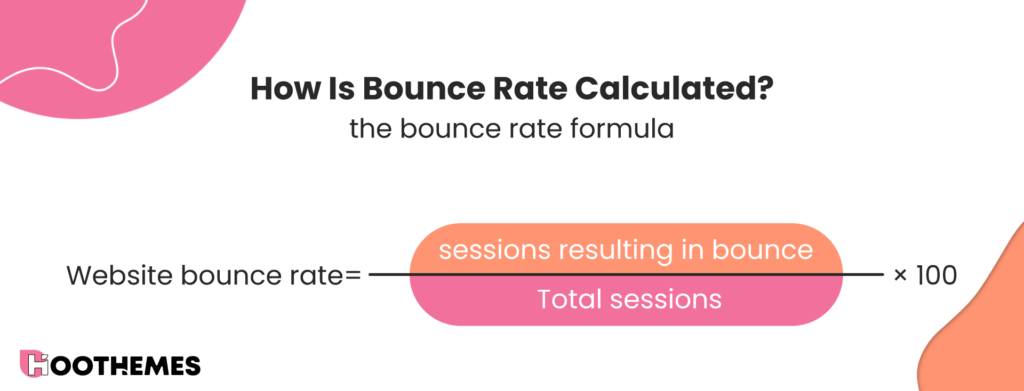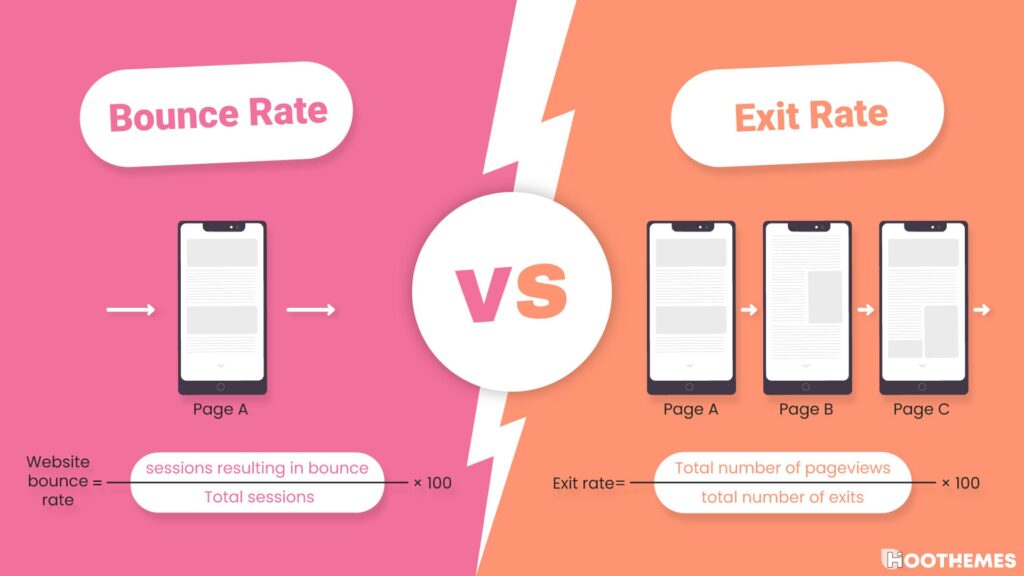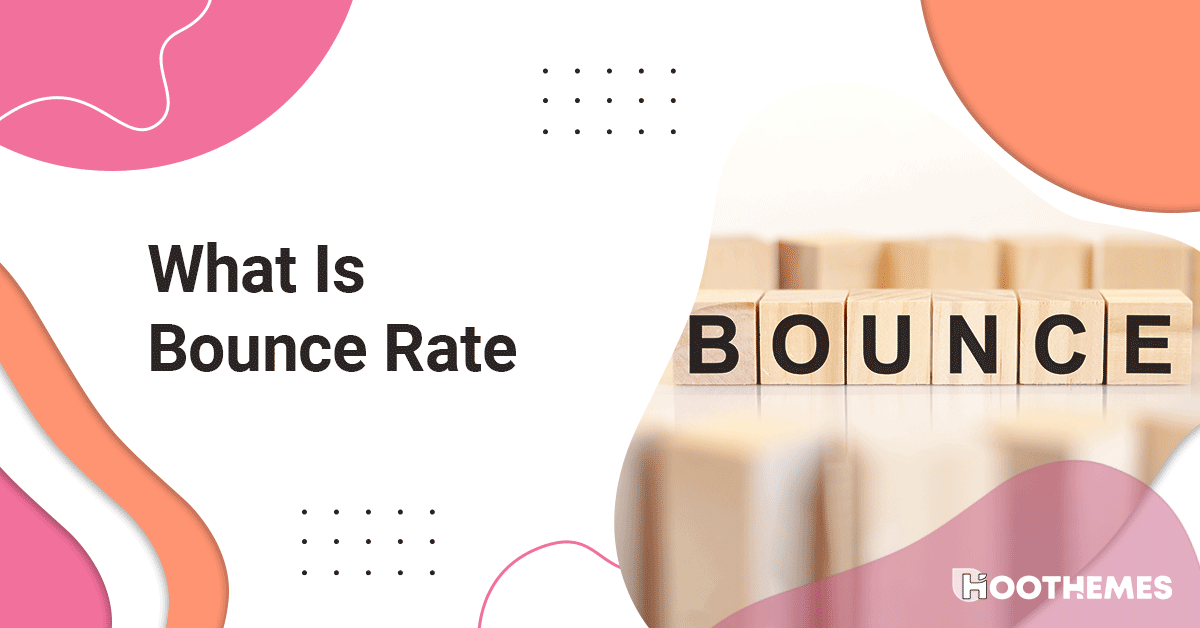One of the key performance indicators (KPIs) in the world of digital marketing is the bounce rate. Many webmasters fear the name, and many will do anything to learn how to stop the ever-increasing number. But, what is bounce rate exactly, and how can you possibly reduce it?! If you’re wondering about these questions, you’re not alone. And we’re not leaving you alone with your questions either!
The definition of bounce rate refers to the percentage of users that come to a webpage and exit it immediately without going to any other page. To understand why most visitors leave your web pages, you need to dive deeper into what’s happening on your web pages and know your visitors’ behaviors.
To that end, with the help of CRO tools, you can analyze your website and users’ interactions. Then, you can figure out how to fix issues that result in bounces. They will help you to identify defective and underperforming web pages. Then you can optimize them to decrease the bounce rate!
If you want to investigate why your website bounce rate is high and how you can improve it, sign up on WatchThemLive for FREE and get instant access to its behavioral analytics features!
Now, let’s get started with some basics. Ready?
What Is Bounce Rate
It means a percentage of sessions where the users open a specific webpage on your site and leave it immediately without viewing other pages or taking any particular action. In simple words, it refers to the percentage of sessions during which the user immediately exits the page without interacting with it.
Let’s put forward a real-life example! Imagine a customer enters the store, looks at the products, and leaves the store without making any purchase or even asking questions. In this case, we say that this customer bounced! A store that loses many customers like this must have a problem somewhere.
In the Internet world, when a website visitor enters your website but leaves without making a purchase or completing a goal, we call it a bounce! And the more your visitors exit the web pages, the higher your bounce rate. However, all websites are not online shops, and the ultimate goal of all website owners isn’t to sell products. As a webmaster, we want visitors to do different actions, including:
- Visiting different pages,
- Clicking on ads,
- Signing up,
- Filling out the forms,
- Sending a message or request for support or advice,
- Watching a video,
- Buying a product or service,
- And, downloading a file.
Well, now let’s see how to calculate a website bounce rate. Shall we?!
How Is Bounce Rate Calculated
Firstly, note that when we use the word ‘rate,’ it means calculating 2 things in relation to each other. Such as the rate of the visitors who enter the site and leave it immediately, and the rate of the total number of visitors who come into your website(whether they interact with your site, click on a link, or buy something). If 10 individuals enter the website today and 5 of them just view a specific page and leave it instantly without clicking on a CTA, making a purchase, or even asking a question, your bounce rate is 50%.
A website bounce rate in digital marketing career is calculated in the same way. That is, the bounce rate is calculated by dividing the number of sessions that result in a bounce by the total number of sessions. Sounds complicated?! Well, here is the bounce rate formula to clarify:

Now, let’s take a look at the bounce rate meaning in Google Analytics!
What Is the “Bounce Rate” in Google Analytics
You can also use Google Analytics to measure it. It uses 2 concepts called ‘session’ and ‘hit’ to calculate your web page bounce rate. Let’s see how these two concepts are supposed to help you.
Session in Google Analytics refers to user activities in a short period of time on your website or application. Every time a user enters the website, Google Analytics turns on a timer that is set to 30 minutes by default. If a user views the second page, Google Analytics will reset its timer and consider it as the second session.
A hit is anything that a user does on your website, and Google Analytics records it. All tasks we mentioned above, such as clicking on ads, signing up, and filling out the forms, are types of hits or so-called requests.
Considering these two concepts that we’ve explained, a bounce can be defined as follows: A bounce is a single-page session that has only one hit. Therefore the website bounce rate is calculated by dividing the number of single-hit sessions by the total website sessions in a period of time.
You might consider:
What’s the Difference Between Bounce Rate and Exit Rate
Due to the similarity of these two metrics, you may mistake them. In this section, once and for all, we mention the major difference between them in a simple way.
Bounce rate is the percentage of people who viewed the first page on your website and left it. In contrast, the exit rate is the percentage of people who leave a particular page (even if the visited page isn’t the first one).
Let’s give you an example for clarification:
Imagine a user enters your site by searching a keyword on Google, but after a few seconds, without viewing another page or taking any interaction, leaves the page and returns to google results. This is a bounce.
Now, imagine someone was directed to your site through page A and then clicks on a link and enters page B. In this case, if this user leaves the site after visiting page B, the exit rate is considered only for page B.
Since the user has performed an action on page A (clicking on a link), there is no bounce rate for page A. In addition, because page B is the first page visited by the user, the bounce rate isn’t attributed to page B either. Now, it makes more sense, right?!

Let’s dive into the reasons that people bounce! These items will have a lot to do with how you can reduce the bounce rate!
What Leads to a High Bounce Rate
Generally, the reasons causing a high bounce rate are:
1. Your Website Doesn’t Meet Users’ Needs & Expectations
Suppose you’re looking to buy a specific product, and after googling, you click on a blog with the best title. But instead of visiting the product page, you land on a website home page. In this case, you’ll probably bounce back to Google to find a website that meets your needs. Right?!
Let’s consider an even more relatable example! Imagine you’ve searched for ‘the best session replay tools’ on google. You open up a blog and come across content around what a session is and no information about a list of tools. Of course, you will be disappointed.
Your only choice, here, is to exit the page and look for a better blog on the search result page. That is, you have bounced because the content didn’t fulfill your expectations and needs.
2. Your Website UI Design Isn’t Appealing Enough
Who says you can’t judge a book by its cover?! In fact, how your website looks like will determine whether your visitors choose to stay or leave. Now, an unpleasant website design can greatly increase your bounce rate.
So, if the UI isn’t reliable, functional, and even enjoyable, you should expect a high bounce rate. That’s only fair!
3. Your Website Delivers Bad UX
Besides an appealing design, your website must be easy to navigate for all users. Moreover, if your website takes a long time to load, doesn’t provide what users are looking for, and isn’t easy to access, it can cause an unpleasant experience in the customer journey and increase the bounce rate.
Now, do you want to know how to prevent the users from bouncing?! You’re in the right spot. Read on to find the way.
How to Reduce Bounce Rate
By now, you know what the bounce rate on a website is and what factors directly impact it, but how can you improve it? Here’s a checklist to start reducing your bounce rate:
- Increase your website loading speed,
- Use persuasive, clear, and appropriate CTAs,
- Iterate a better design for your website based on users’ expectations,
- And generally deliver a seamless user experience.
But as we mentioned, there is no way to reduce the bounce rate without understanding what leads up to a bounce. To identify the specific reason behind each bounce, you must figure out how your visitors interact on your website.
Therefore to find out the reason and find what needs to be optimized on your website, you need to answer some questions like:
- How are your visitors behaving on your website?
- How are users who leave your site behaving differently?
- What makes them bounce?
- Why are they bouncing the web page without taking any action?
- Plus, is there any problem or bug on your site that causes bounce? If so, What is it?
- And, how do you fix it?
That’s where behavioral analytics tools come in, which can help you find the reason behind your site’s high bounce rate. Keep reading to find the best tool that enables you to answer all the above questions and reduce the bounce rate on your website.
Here’s the best platform that provides services like session replay tools and clickmaps to prevent any bounce!
WatchThemLive: The Best Tool for Reducing Bounce Rate
WatchThemLive is a behavioral analytics tool that helps you investigate why bounces happen and find the best solution to reduce them. This service will give you in-depth insights into how your visitors behave, why they interact (or not) with your site, and what makes them bounce. It offers features like session replays (recordings) and heatmaps.
You can sign up now and start improving your bounce rate and prevent cart abandonment.
WatchThemLive’s Session Replays (Recordings)
Wanna find the reason behind their bounce? Well, WatchThemLive’s session replay features are here to help you in this regard. Read on to find out how!
This service provides insights into issues that caused your visitors to exit your webpage by recording videos from their sessions. When you watch these videos, you get a sense of where/why the bounces usually occurred.
Interested to know how the users interact, behave, and move on your website? Want to know what makes them bounce your site? What are your website bugs and barriers that make them unsatisfied and leave?
If so, WatchThemLive enables you to get all the necessary information and data to reduce the bounce rate. By watching users’ recorded sessions, you can identify their expectations and needs, the reasons behind their exit from your site, and the bugs on your site that made them leave.
Moreover, there is a console error under each session that informs when any error occurs in the session. In addition, there are advanced filtering options to narrow down sessions based on specific categories, such as device type, country, and more. Amazing, isn’t it?!
Let’s take a look at its second feature that is necessary to decrease your bounce rate, shall we?!
WatchThemLive Heatmaps
WatchThemLive’s clickmaps will indicate any areas on your website that get the most or least clicks in a visualized form. It uses a scale of colors from red to blue to show which spots are more clicked. As a result, you will understand users’ interactions from the moment they enter to the second they leave.
It will track all your users’ journeys and record all your visitors’ clicks. Using heatmaps, you can find where visitors click most and where they expected to land but didn’t, and why they exit the page. Now, by knowing what causes your users to exit, you can find a way to fix the problem and offer better UX to make them stay and turn into customers.
Want to learn more about its features?! Go ahead!
WatchThemLive’s Fabulous Features
Besides, this tool offers other impressive features make it shines among other similar tools:
Visual live chat: looking for a better way to understand users’ problems instead of reading their explanations?! Don’t worry. WatchThemLive’s visual live chat will display users’ session after a second they left a message on the chatbot. By using it, you can find their problem easily and fix them faster than ever. Pretty straightforward, right?!
Video testimonials: it is one of the secret weapons of WAtchThemLive that makes it stand out from competitors. With the help of video testimonials, collecting customers feedbacks about your brand is no longer time-consuming. By using it, no one refuses to come in front of the camera and share their experiences with your product. This service displays a questionnaire on users’ screens, and All they need to do is answer them while recording the video.
Sign up now to get immediate access and investigate why bounces occur and how to reduce them!
If you want to learn more about this service, read our complete WatchThemLive review!
FAQs on Bounce Rate
so far, we‘ve explained all you need to know about this metric. Now, let’s answer some common and frequently asked questions regarding this topic. Shall we?!
1. What Is a Good Bounce Rate for a Website?
If you’re a website owner, you may have ever wondered, “what is a high bounce rate, or what is the average bounce rate, and what is a good website bounce rate?” Generally, the avg bounce rate can vary significantly based on the site’s context. That is, what your industry is, and what your traffic sources are can all affect your web page bounce rate.
Let’s put forward an example.
You should expect a high bounce rate if you have a single-page website like a blog that offers different food recipes. Since users are just looking for a recipe, they will often exit the web page after reading it.
On the other hand, if you have an online shop and want visitors to go through the sales funnel, your average bounce rate isn’t the same as a weblog.
You may still consider “ what is considered a good bounce rate?” Well, it is worth noting that the avg bounce rate for most websites is between 26% to 70%.
2. What Is Bounce Rate in SEO?
In short, bounce rate isn’t a ranking factor, and it has no effect on your website’s ranking in Google results. Although bounce rate doesn’t directly impact organic ranking, it indirectly affects other SEO factors that Google cares about, like page speed, content SEO, and design. To clarify, if a website has a high bounce rate, this can affect SEO results and it’s often a symptom of weakness in SEO factors.
These are SEO factors that you need to check when you have a high bounce rate:
- Loading speed,
- The quality of web page design,
- Plus, mobile optimization and more.
3. Why Is Bounce Rate Important?
A website bounce rate is so crucial for your website conversion rate optimization. Read on to see how!
Since the bounced users didn’t take any action on the page, they also didn’t affect the conversion rate. Therefore, when you reduce the bounce rate of your website, your conversion rate will grow simultaneously.
Bounce rate is a metric to measure your website quality. It determines whether your site content, UI, and UX are pleasant. If not, you can fix problems, improve user experience, decrease the bounce rate and increase the conversion rate.
Conclusion
In general, bounce rate is a good metric to check your efforts on your website. But you shouldn’t use it to judge your success. This metric will help you identify elements that need optimization. The important point is that you don’t know what happens before a bounce, how your visitors interact with your site, and what makes your visitors click on the back button, you won’t find the elements on your webpage that need improvement.
So, you need behavioral analytics to find the answer to the above questions and find the best solution for a lower bounce rate. WatchThemLive is a successful tool for looking deeply into your visitors’ behaviors. Sign up now and reduce your bounce rate!



![Read more about the article Best WordPress Themes for Artists [+Art Website Templates]](https://www.hoothemes.com/wp-content/uploads/2022/10/Best-WordPress-Themes-for-Artists-1-300x157.png)



